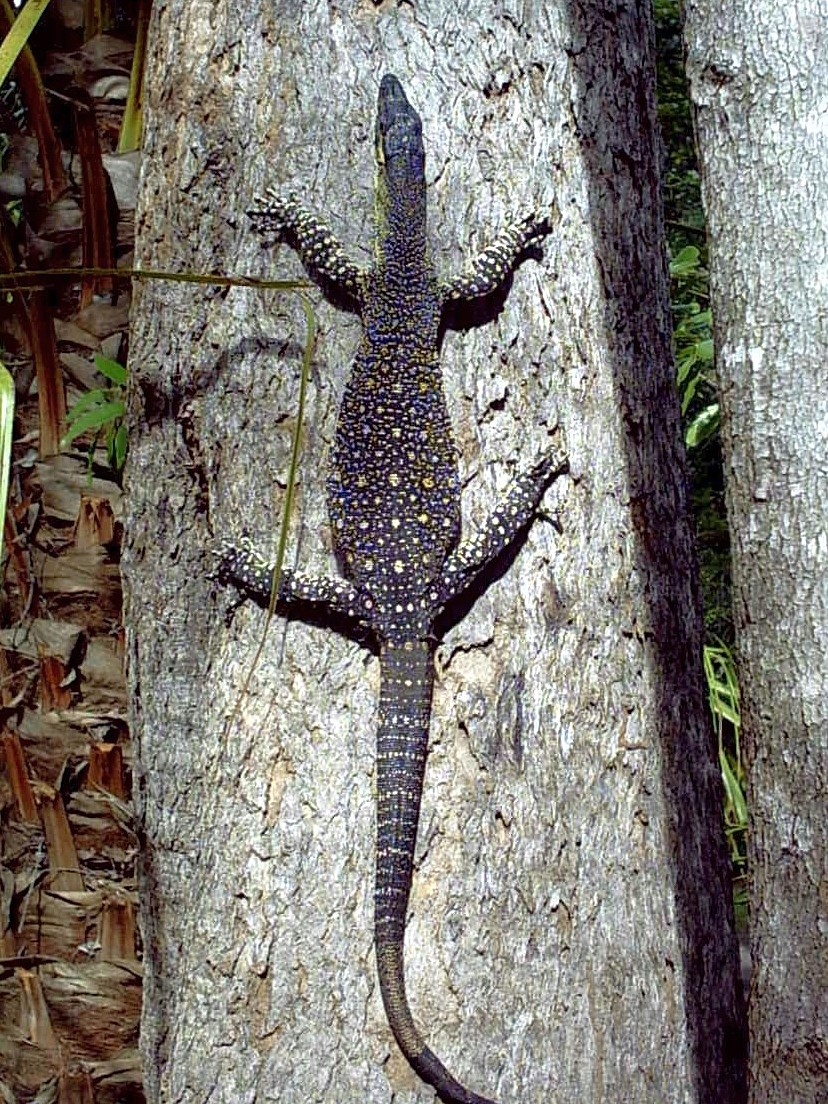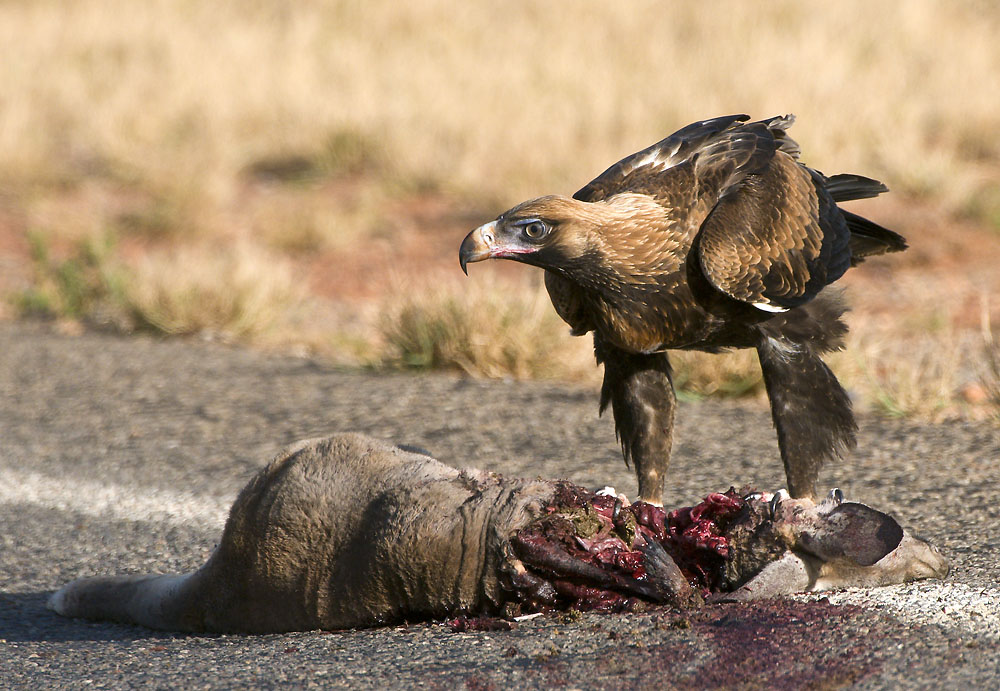|
Varanus Rosenbergi
The Rosenberg's monitor (''Varanus rosenbergi'') is an Australian species of varanid reptile found in southern regions of the continent. They are large and fast predators with rugged bodies and long tails, having a combined length up to 1.5 metres, that will consume any smaller animal that is pursued and captured or found while foraging. They occur in the Australian Capital Territory, New South Wales, South Australia, Victoria, where it may be rare or locally common, and more frequently observed in Western Australia, where it is sometimes abundant. Taxonomy The species was first described by German herpetologist Robert Mertens in 1957, named and recognized as a subspecies of '' Varanus gouldii''; a revision of Western Australian monitors published in 1980 elevated the taxon to species status. It is now considered to be a member of the ''V. gouldii'' species complex. The holotype was collected at the Stirling Range in Southwest Australia. The specific name, ''rosenbergi'', is in ... [...More Info...] [...Related Items...] OR: [Wikipedia] [Google] [Baidu] |
Robert Mertens
Robert Friedrich Wilhelm Mertens (1 December 1894 – 23 August 1975) was a German herpetologist. Several taxa of reptiles are named after him.Beolens, Bo; Watkins, Michael; Grayson, Michael (2011). ''The Eponym Dictionary of Reptiles''. Baltimore: Johns Hopkins University Press. xiii. ("Mertens", p. 176; "Robert", p. 223; "Robert Mertens", p. 223). He postulated Mertensian mimicry. Mertens was born in Saint Petersburg, Russia. He moved to Germany in 1912, where he earned a doctorate in zoology from the University of Leipzig in 1915. During World War I, he served in the German army. Mertens worked at the Senckenberg Museum in Frankfurt for many years, beginning as an assistant in 1919, and retiring as director emeritus in 1960. He also became a lecturer at Goethe University Frankfurt in 1932, and became a Professor there in 1939. Both jobs provided him with ample time for extensive travel and the study of lizards. He collected specimens in 30 countries. During World War II, ... [...More Info...] [...Related Items...] OR: [Wikipedia] [Google] [Baidu] |
Goanna - Flickr - GregTheBusker (cropped)
A goanna is any one of several species of lizard of the genus '' Varanus'' found in Australia and Southeast Asia. Around 70 species of ''Varanus'' are known, 25 of which are found in Australia. This varied group of carnivorous reptiles ranges greatly in size and fills several ecological niches. The goanna features prominently in Aboriginal mythology and Australian folklore. Being predatory lizards, goannas are often quite large with sharp teeth and claws. The largest is the perentie (''V. giganteus''), which can grow over in length. Not all goannas are so large; pygmy goannas may be smaller than the arm of an adult human. The smallest of these, the short-tailed monitor (''V. brevicauda''), reaches only in length. They survive on smaller prey, such as insects and mice. Goannas combine predatory and scavenging behaviours. They prey on any animal they can catch that is small enough to eat whole. They have been blamed by farmers for the death of sheep, though most likely erron ... [...More Info...] [...Related Items...] OR: [Wikipedia] [Google] [Baidu] |
Wallaby
A wallaby () is a small or middle-sized Macropodidae, macropod native to Australia and New Guinea, with introduced populations in New Zealand, Hawaii, the United Kingdom and other countries. They belong to the same Taxonomy (biology), taxonomic family as kangaroos and sometimes the same genus, but kangaroos are specifically categorised into the four largest species of the family. The term "wallaby" is an informal designation generally used for any macropod that is smaller than a kangaroo or a wallaroo that has not been designated otherwise. There are nine species (eight extant and one Extinction, extinct) of the brush wallaby (genus ''Notamacropus''). Their head and body length is and the tail is long. The 19 known species of Rock-wallaby, rock-wallabies (genus ''Petrogale'') live among rocks, usually near water; two species in this genus are endangered. The two living species of hare-wallabies (genus ''Lagorchestes''; two other species in this genus are extinct) are sma ... [...More Info...] [...Related Items...] OR: [Wikipedia] [Google] [Baidu] |
Phalangeriformes
Phalangeriformes is a paraphyletic suborder of about 70 species of small to medium-sized arboreal locomotion, arboreal marsupials native to Australia, New Guinea, and Sulawesi. The species are commonly known as possums, opossums, gliders, and cuscus. The common name "(o)possum" for various Phalangeriformes species derives from the creatures' resemblance to the opossums of the Americas (the term comes from Powhatan language ''aposoum'' "white animal", from proto-Algonquian language, Proto-Algonquian *''wa·p-aʔɬemwa'' "white dog"). However, although opossums are also marsupials, Australasian possums are more closely related to other Australidelphia, Australasian marsupials such as kangaroos. Phalangeriformes are quadrupedalism, quadrupedal Diprotodontia, diprotodont marsupials with long tails. The smallest species, indeed the smallest diprotodont marsupial, is the Tasmanian pygmy possum, with an adult head-body length of and a weight of . The largest are the two species of be ... [...More Info...] [...Related Items...] OR: [Wikipedia] [Google] [Baidu] |
Road Kill
Roadkill is a wild animal that has been killed by collision with motor vehicles. Wildlife-vehicle collisions (WVC) have increasingly been the topic of academic research to understand the causes, and how they can be mitigated. History Essentially non-existent before the advent of mechanized transport, roadkill is associated with increasing automobile speed in the early 20th century. In 1920, naturalist Joseph Grinnell wrote of his observations in the state of California that "this is a relatively new source of fatality; and if one were to estimate the entire mileage of such roads in the state, the mortality must mount into the hundreds and perhaps thousands every 24 hours." In Europe and North America, deer are the animal most likely to cause vehicle damage. Causes The development of roads affects wildlife by altering and isolating habitat and populations, deterring the movement of wildlife, and resulting in extensive wildlife mortality. One writer states that "our insulate ... [...More Info...] [...Related Items...] OR: [Wikipedia] [Google] [Baidu] |
Limnodynastes
''Limnodynastes'' (commonly known as the Australian swamp frogs) is a genus of frog native to Australia, southern New Guinea and some Torres Strait Islands. They are ground-dwelling frogs, with no toe pads. The size varies from 45 mm to 90 mm in the giant banjo frog. The webbing on the feet ranges between species, from very little, to almost complete. The tympanum is not visible in any species, except in the woodworker frog, which is sometimes classed in a separate genus ''Megistolotis''. All species construct a foam nest in which the eggs are laid. However, in south-eastern South Australia female striped marsh frog and spotted grass frog lack the flanges of skin on the hands that helps trap the air bubble and do not construct foam nest A nest is a structure built for certain animals to hold Egg (biology), eggs or young. Although nests are most closely associated with birds, members of all classes of vertebrates and some invertebrates construct nests. They may be ... [...More Info...] [...Related Items...] OR: [Wikipedia] [Google] [Baidu] |
Coleoptera
Beetles are insects that form the Taxonomic rank, order Coleoptera (), in the superorder Holometabola. Their front pair of wings are hardened into wing-cases, elytra, distinguishing them from most other insects. The Coleoptera, with about 400,000 described species, is the largest of all orders, constituting almost 40% of described arthropods and 25% of all known animal species; new species are discovered frequently, with estimates suggesting that there are between 0.9 and 2.1 million total species. However, the number of beetle species is challenged by the number of species in Fly, dipterans (flies) and hymenopterans (wasps). Found in almost every habitat except the sea and the polar regions, they interact with their ecosystems in several ways: beetles often feed on plants and fungi, break down animal and plant debris, and eat other invertebrates. Some species are serious agricultural pests, such as the Colorado potato beetle, while others such as Coccinellidae (ladybirds or ... [...More Info...] [...Related Items...] OR: [Wikipedia] [Google] [Baidu] |
Blattoidea
Blattoidea is a superfamily of cockroaches and termites in the order Blattodea. There are about 17 families and more than 4,100 described species in Blattoidea. The 12 families of termites are sometimes considered members of the suborder Isoptera, but recent phylogenetic analysis places them within the cockroach superfamily Blattoidea. Within Blattoidea, the termites are grouped under the epifamily Termitoidae. The great coal deposits of the Carboniferous Period have been attributed in part to the lack of wood-consuming insects such as blattoids, which do not appear in the fossil record until the late Carboniferous. Families These 17 families belong to the superfamily Blattoidea: Cockroaches Epifamily Blattoidae * Anaplectidae Walker, 1868 * Blattidae Latreille, 1810 * Lamproblattidae McKittrick, 1964 * Tryonicidae McKittrick & Mackerras, 1965 Epifamily Cryptocercoidae * Cryptocercidae Handlirsch, 1925 (brown-hooded cockroaches) Termites Epifamily Termitoidae * Archot ... [...More Info...] [...Related Items...] OR: [Wikipedia] [Google] [Baidu] |
Areneidae
Areneidae is a family of sea snails, marine gastropod mollusks in the clade Vetigastropoda.MolluscaBase eds. (2020). MolluscaBase. Areneidae McLean, 2012. Accessed through: World Register of Marine Species at: http://www.marinespecies.org/aphia.php?p=taxdetails&id=413480 on 2020-05-25 Areneidae was previously not officially described as a taxon name.WoRMS (2010). ''Arene'' Adams, 1845. In: Bouchet, P.; Gofas, S.; Rosenberg, G. (2010) World Marine Mollusca database. Accessed through: World Register of Marine Species at http://www.marinespecies.org/aphia.php?p=taxdetails&id=413481 on 2010-04-17 Areneidae is provisionally placed within the superfamily Angarioidea according to Williams et al. (2008).Williams S. T., Karube S. & Ozawa T. (September 2008) "Molecular systematics of Vetigastropoda: Trochidae, Turbinidae and Trochoidea redefined". ''Zoologica Scripta'' 37(5): 483-506. In 2012 it was moved to the superfamily Trochoidea Genera There are two genera within the family Are ... [...More Info...] [...Related Items...] OR: [Wikipedia] [Google] [Baidu] |
Acrididae
Acrididae are the predominant family of grasshoppers, comprising some 10,000 of the 11,000 species of the entire suborder Caelifera. The Acrididae are best known because all locusts (swarming grasshoppers) are of the Acrididae. The subfamily Oedipodinae is sometimes classified as a distinct family Oedipodidae in the superfamily Acridoidea. Acrididae grasshoppers are characterized by relatively short and stout antennae (so they may be called "short-horned grasshoppers"Borror, Donald J. and Richard E. White. ''A Field Guide to the Insects of America North of Mexico.'' Houghton Mifflin, Boston: 1970. p. 78), and tympanal organ, tympana on the side of the first abdominal segment. Subfamilies The ''Orthoptera Species File'' (September 2021) lists the following subfamilies of Acrididae. The numbers of genera and species are approximate and may change over time. * Acridinae MacLeay, 1821 (140 genera, 470 species), Worldwide: temperate and tropical * Calliptaminae Jacobson, 1905 ... [...More Info...] [...Related Items...] OR: [Wikipedia] [Google] [Baidu] |
Carrion
Carrion (), also known as a carcass, is the decaying flesh of dead animals. Overview Carrion is an important food source for large carnivores and omnivores in most ecosystems. Examples of carrion-eaters (or scavengers) include crows, vultures, humans, hawks, eagles, hyenas, Virginia opossum, Tasmanian devils, coyotes and Komodo dragons. Many invertebrates, such as the Silphidae, carrion and burying beetles, as well as maggots of Calliphoridae, calliphorid flies (such as one of the most important species in ''Calliphora vomitoria'') and Flesh-fly, flesh-flies, also eat carrion, playing an important role in recycling nitrogen and carbon in animal remains. Carrion begins to decay at the moment of the animal's death, and it will increasingly attract insects and breed bacteria. Not long after the animal has died, its body will begin to exude a foul odor caused by the presence of bacteria and the emission of cadaverine and putrescine. Carrion can harbor many infectious and diseas ... [...More Info...] [...Related Items...] OR: [Wikipedia] [Google] [Baidu] |






